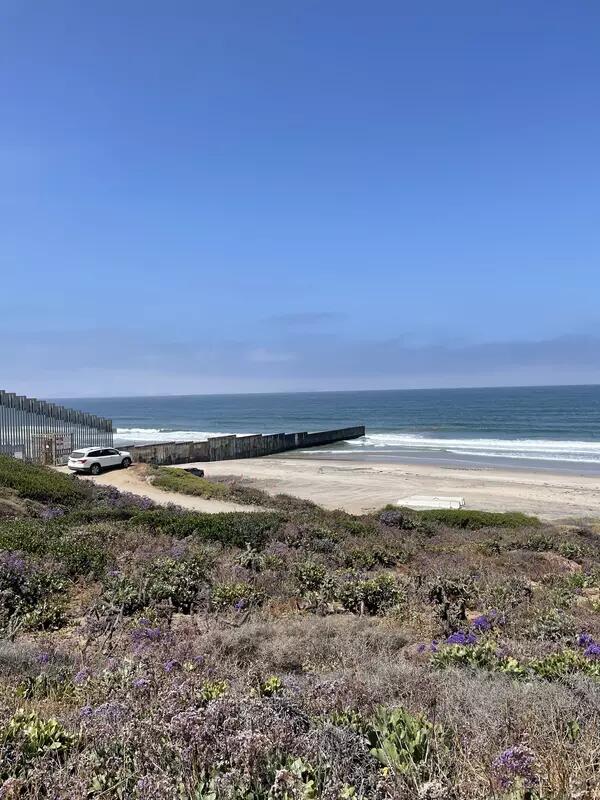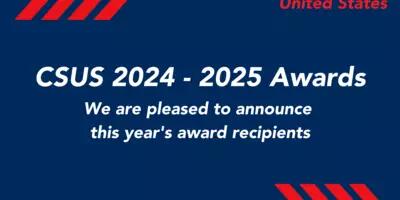
New Course in American Studies: Transnational America
The Centre for the Study of the United States is introducing a new course this winter semester that includes a Reading Week research trip to Southern California.
This course, offered on Tuesdays from 2:00 - 4:00pm, is open to students who have taken AMS300H1/USA300H1 OR have completed 1.0 credit chosen from the four American Studies Program disciplinary/thematic clusters (Politics and Economics, Society, Culture, and History). If you do not have these prerequisites but would like to take the course, please contact Professor Leah Montange or csus@utoronto.ca to discuss exceptions to the prerequisites.
See what the course’s instructor, Professor Leah Montange has to share about this exciting new course!
What are your interests in American Studies?
American Studies is fundamentally about critically thinking through the US’s “place” in the world – in world history, geography, politics and culture. I am personally interested in understanding the role of borders, human migration, mobility and immobility in all of that.
The AMS313 Transnational America course I’m planning for Winter 2024 will look at the US through its connections with its “outside”. How does the US exceed its own boundaries? How does the global shape the US economically, politically, culturally, environmentally?
What can students expect from AMS313 Transnational America?
We will start with some of the fundamental texts from American Studies about transnationalism and the US. We will then take a look at four transnational threads that have an enormous influence on the economies, politics, culture and population of Southern California: the US military; the US-Mexico border; the borderland culture including cultures of resistance; and global supply chains that pass through the region. Students will design their own qualitative research projects which will involve doing some of their own fieldwork in Southern California. Together we will take a trip to San Diego, Los Angeles, and their hinterlands during the February Reading Week. After reading week we will come back to Toronto and spend time putting together our research projects into a showcase.
Who can take the AMS313 course?
We will prioritize American Studies majors and minors in good standing first and foremost. Third and fourth year students outside the program can still enroll, subject to my approval.
Everyone enrolling in the course should commit to the field trip –please reach out to me if you have any questions about this. This means you will need to be available for the entire Reading Week in February. It means that you need to have a valid passport before Reading Week and, if you are not a US or Canadian citizen, get any necessary visa. Students are responsible to get their own travel documents in order.
We have funding for ten students – and we are very hopeful about getting funding for a couple more, if more are interested. I will be in touch with each student who registers to confirm their sincere interest in and commitment to attending the field trip. Priority will be given to students who have not already received funding for a Faculty of Arts & Science international opportunity including 398 REP, IICM, or DIIIF – although some exceptions may apply.
Tell us more about the field trip.
Yes, I am very excited about this. We got funding from the University of Toronto to bring students to Southern California for seven days during reading week. The entire trip will cost each student $200 – though if this is a barrier to your participation, please get in touch with me. We have a workaround for those who need it.
I’ve already arranged some great experiences during the trip and I’m planning more: a walking tour of San Diego’s Chicano Park murals with a muralist, a visit to the desert to drop off water for migrants, a guided tour of Los Angeles’ logistics chain from Port to Walmart store, and way more. Students will also have two free days, one in Los Angeles and one in San Diego, to work on their projects and explore these cities on their own. We’ll work in some beautiful beach sunsets and plenty of tacos along the way!
What’s the teaching style of this course? What activities would upcoming student partake in?
This course will be a little different from a typical Approaches to American Studies course. Yes, we will learn by engaging with academic texts. But, we will also learn by doing. Many sessions will be split between discussing/studying content and skills-based workshops. The first half of the course will focus on preparing for the field trip – by doing background readings, learning how to make field notes, developing research questions, etc. The second half will be focused on consolidating what we learned and putting together our projects for the research showcase.
And of course, there will be the field trip to Southern California.
What’s your teaching philosophy?
To be blunt, I think that the way that the way university students are used to learning – by sitting passively through a lecture and skimming readings (or maybe not even doing that!) is a disservice. I strive for a classroom where students have multiple ways of learning, where discussions are frequent and pre-eminently important, where the relevance of what we are learning is clear, and where students get practices at skills related to our field of study.
What are some characteristics of students who are successful in your courses and in this program?
In every course I teach, I try to cultivate an atmosphere where students learn from each other as well as from me. The basic requirement that makes this possible is for students to come to class prepared – you just won’t get as much out of things if you don’t read (or listen on audio) to your assigned readings ahead of class time. That’s just how it is.
The other thing that I’m looking for this year, in all my courses, is a willingness to be a bit bold. Too often students hedge in their papers or make timid claims. Enough with the timidity! Let’s take some risks.
The other thing, and this probably works in every class and workplace – make sure you are fulfilling the requirements of the assignments, take those requirements literally. And come to class.
What are some takeaways you’d like students to have from taking this course?
I’d like my students to walk away from this course with two things: an incredible learning experience in Southern California, and a sense of accomplishment from going through a qualitative research project from start to finish. Here’s a third takeaway I’d like for my students as well, and maybe I’m full of hubris here: I’d like students who take this class to walk away with a more expansive and critical perspective of the US’s “place” in the world.

